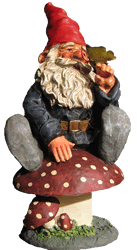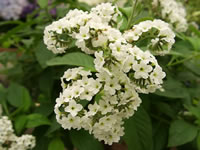How to Grow and Care for Heliotrope Plants
Heliotropium arborescens
          
Heliotropes are also known by the old-fashioned name of a Cherry Pie Plant.
Heliotrope plants are frost tender, evergreen shrubs that are most often cultivated
as fast growing, easy to care for, annual bedding plants.
They can also be grown in containers and over-wintered indoors in a brightly lit, cool (55°-65°) place.
In regions where they are hardy, Heliotrope plants will grow 4-6 feet tall
but they will only grow from 12"-18" tall and wide as annual plants or in containers.
Heliotropes have attractive, 3"-4", dark green, lance shaped leaves with prominent veins but the main attraction is their
4" clusters of tiny, tightly grouped, funnel shaped purple, violet or white flowers throughout their entire growing season.
The flowers have the sweet fragrance of vanilla or sometimes the aroma cherry pie...
All parts of the Heliotrope plant are poisonous.
|
 |
Growing Requirements for Heliotrope Plants
Unfortunately, Heliotrope plants are only hardy in USDA Zones 10-11.
They prefer cooler climates where they should be grown in full sun for the best growth and blooms.
In areas with hot summers they should be grown in partial shade.
Heliotropes should be planted in moist, rich, slightly acidic soil that has been supplemented
with a generous amount of well-decayed compost at planting time.
Well-drained soil is essential to prevent root rot.
Water regularly and thoroughly. Container grown plants should be watered thoroughly when the surface of the soil just begins to dry. Apply a heavy cover of mulch to help preserve moisture.
Cut established plants back by ½ in late winter or very early in the spring to induce bushiness.
Pinch young plants to promote branching.
Deadhead spent flowers regularly to promote continued flowering.
Heliotropes can be pruned as needed in the fall after blooming, or in late winter.
|
|
Feed your Heliotrope monthly while it is actively growing, using a bloom type fertilizer (7-9-5) according to label directions.
Heliotrope
Heliotropium arborescens
 |
|
|
|
|
Search The Garden Helper:


